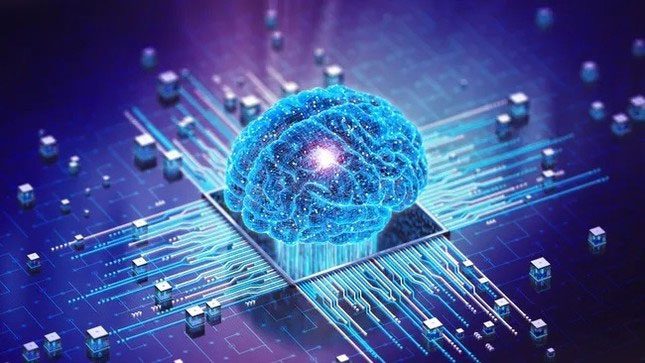Researchers have integrated a “brain organ” into artificial intelligence systems, utilizing neural tissue to assist in performing computational tasks. This experiment could signify a step forward toward “biocomputers.”
To enhance the computational power of artificial intelligence (AI), researchers have combined modern machine learning techniques with sophisticated 3D models of the human brain, composed of various types of brain tissue cultivated in the laboratory.

Scientists have combined machine learning, a type of artificial intelligence system, with a small 3D model of the brain. (Photo: BlackJack3D via Getty Images).
These miniature models of the brain, referred to as “mini-brains”, have existed in various forms since 2013. However, they have never been utilized as a means to enhance AI.
The new research employs more traditional computer hardware to input electrical data into the organoid and then decodes the organoid’s activity to produce outputs—thus, the organoid acts merely as an “intermediate layer” in the computational process.
Although this method cannot replicate the actual structure of the brain or how it functions, it may provide the first step toward creating biocomputers that borrow techniques from biology to make them more powerful and energy-efficient compared to traditional computers.
“Biocomputers” could also offer deeper insights into how the human brain works and how it is affected by neurodegenerative conditions such as Alzheimer’s disease and Parkinson’s disease.
Co-author of the study, Feng Guo, an associate professor of intelligent systems engineering at Indiana University Bloomington, stated: “Essentially, we can encode information—like image or sound data—into a space-time pattern of electrical stimuli.”
In other words, the organic material reacts differently depending on the timing and spatial distribution of electrical impulses from the electrodes. The algorithm learned to interpret the organoid’s electrical responses to those stimuli.
By utilizing this unique hardware, the researchers trained their hybrid algorithm to complete two types of tasks: one related to speech recognition and another related to mathematics.
Previously, computers showed an accuracy of about 78% when recognizing Japanese vowels from hundreds of audio samples. It was fairly accurate in solving mathematical problems, though slightly less so than traditional machine learning models.
This study marks the first time a brain organ has been used with AI, although earlier studies have employed simpler types of neural tissue cultivated in the laboratory in a similar manner.
One of the benefits of creating biocomputers is energy efficiency, as our brains use far less energy than today’s advanced computer systems. However, Smirnova indicated that it may take decades for such technology to be used to create a mainstream biocomputer.
Although the organoids cannot replicate a complete human brain, Smirnova hopes this technology will help scientists gain a better understanding of how the brain functions, including diseases like Alzheimer’s.


















































